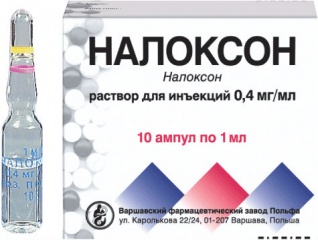Coma is a state of complete lack of consciousness, when a person does not react to anything. In a coma, no stimulus (neither external nor internal) is able to bring a person to life. This is a life-threatening resuscitation state, because, in addition to loss of consciousness, with a coma, violations of the functions of vital organs (respiration and cardiac activity) are observed.
Being in a state of coma, a person is not aware of either the world around him or himself.
Coma is always a complication of any disease or pathological condition (poisoning, injury). All comas have a number of common features, regardless of the cause of their occurrence. But there are also differences in clinical symptoms for different types of coma. Coma treatment should be carried out in an intensive care unit. It is aimed at maintaining vital body functions and preventing the death of brain tissue. From this article you will learn about what coma are, how they are characterized, and what are the basic principles of treating coma.
What is the root of a coma?
Coma is based on two mechanisms:
- bilateral diffuse lesion of the cerebral cortex;
- primary or secondary lesion of the brain stem with the reticular formation located in it. The reticular formation maintains the tone and active state of the cerebral cortex. When the reticular formation is turned off, deep inhibition develops in the cerebral cortex.
Primary damage to the brain stem is possible in conditions such as a tumor process. Secondary disorders occur during metabolic changes (with poisoning, endocrine diseases, etc.).
A combination of both mechanisms of coma development is possible, which is most often observed.
As a result of these disorders, it becomes impossible for the normal transmission of nerve impulses between the cells of the brain. At the same time, the coordination and coordinated activity of all structures is lost, they go to an autonomous regime. The brain loses its managerial functions over the entire organism.
Classification of com

Comatose states are usually divided according to various criteria. The most optimal are two classifications: by the causal factor and by the degree of depression of consciousness (depth of coma).
When dividing by a causal factor, conventionally, all comas are classified into comas with primary neurological disorders (when a process in the nervous system itself served as the basis for the development of coma) and secondary neurological disorders (when brain damage arose indirectly in the course of some pathological process outside the nervous system). Knowing the cause of the coma allows you to correctly determine the tactics of treating the patient.
So, depending on the cause that led to the development of coma, there are such types of coma: neurological (primary) and secondary genesis.
Neurological (primary) genesis:
- traumatic (with traumatic brain injury);
- cerebrovascular (with acute vascular circulatory disorders in the brain);
- epileptic (result);
- meningoencephalitic (the result of inflammatory diseases of the brain and its membranes);
- hypertensive (due to a tumor in the brain and skull).
Secondary genesis:
- endocrine (diabetic in diabetes mellitus (there are several types of them), hypothyroid and thyrotoxic in diseases of the thyroid gland, hypocorticoid in acute adrenal insufficiency, hypopituitary in total pituitary hormone deficiency);
- toxic (with renal or liver failure, with poisoning with any substances (alcohol, drugs, carbon monoxide, etc.), with cholera, with drug overdose);
- hypoxic (with severe heart failure, obstructive pulmonary disease, with anemia);
- coma when exposed to physical factors (thermal when overheating or hypothermia, with electric shock);
- coma with a significant deficiency of water, electrolytes and food (hungry, with indomitable vomiting and diarrhea).
According to statistics, the most common cause of coma is stroke, followed by drug overdose, and complications of diabetes mellitus in third place.
The need for the existence of a second classification is due to the fact that the causal factor itself does not reflect the severity of the patient's condition in a coma.
Depending on the severity of the condition (the depth of oppression of consciousness), it is customary to distinguish the following types of coma:
- I degree (light, subcortical);
- II degree (moderate, forestem, "hyperactive");
- III degree (deep, rear-stemmed, "sluggish");
- IV degree (transcendental, terminal).
Distinguishing degrees of coma is difficult because the transition from one stage to the next can be very rapid. This classification is based on different clinical symptoms corresponding to a certain stage.
Coma signs

Coma I degree
It is called subcortical, because at this stage the activity of the cerebral cortex is inhibited and the deeper parts of the brain, called subcortical formations, are disinhibited. It is characterized by the following manifestations:
- feeling that the patient is in a dream;
- complete disorientation of the patient in place, time, personality (it is impossible to stir up the patient);
- lack of answers to the questions asked. Perhaps inarticulate mooing, making various sounds out of connection with what is happening from the outside;
- the absence of a normal reaction to a pain stimulus (that is, the reaction is weak and very slow, for example, when a needle is injected with a needle, the patient does not withdraw it immediately, but only weakly bends or unbends some time after the pain stimulation is applied);
- spontaneous active movements are practically absent. Sometimes sucking, chewing, swallowing movements may occur as a manifestation of brain reflexes, which are normally suppressed by the cerebral cortex;
- muscle tone is increased;
- deep reflexes (knee, Achilles and others) increase, and superficial (corneal, plantar and others) are inhibited;
- pathological hand and foot symptoms are possible (Babinsky, Zhukovsky and others);
- the reaction of the pupils to light is preserved (narrowing), squint, spontaneous movements of the eyeballs can be observed;
- lack of control over the activity of the pelvic organs;
- usually spontaneous breathing is preserved;
- from the side of cardiac activity, an increase in heart rate (tachycardia) is observed.
Coma II degree
At this stage, the activity of the subcortical formations is inhibited. Disturbances descend to the anterior parts of the brainstem. This stage is characterized by:
- the appearance of tonic convulsions or periodic flinching;
- lack of speech activity, verbal contact is impossible;
- a sharp weakening of the reaction to pain (slight movement of the limb when the injection is applied);
- oppression of all reflexes (both superficial and deep);
- constriction of the pupils and their weak reaction to light;
- an increase in body temperature;
- increased sweating;
- sharp fluctuations in blood pressure;
- severe tachycardia;
- breathing disorder (with pauses, with stops, noisy, with different depths of breaths).
Coma III degree
Pathological processes reach the medulla oblongata. The risk to life is increased and the prognosis for recovery is deteriorating. The stage is characterized by the following clinical signs:
- protective reactions in response to a painful stimulus are completely lost (the patient does not even move a limb in response to an injection);
- superficial reflexes are absent (in particular, corneal);
- there is a sharp decrease in muscle tone and tendon reflexes;
- pupils are dilated and do not respond to light;
- breathing becomes shallow and arrhythmic, not very productive. Additional muscles (muscles of the shoulder girdle) are involved in the act of breathing, which is not normally observed;
- blood pressure decreases;
- periodic convulsions are possible.
Coma IV degree
At this stage, there are no signs of brain activity. This is manifested:
- lack of all reflexes;
- the maximum possible dilation of the pupils;
- muscle atony;
- lack of spontaneous breathing (only artificial ventilation of the lungs supports the supply of oxygen to the body);
- blood pressure drops to zero without medication;
- drop in body temperature.
Achieving a grade IV coma has a high risk of death, approaching 100%.
It should be noted that some of the symptoms of the different stages of coma may differ depending on the cause of the coma. In addition, certain types of coma have additional signs, which in some cases are diagnostic.
Clinical features of some types of com
Cerebrovascular coma

It always becomes the result of a global vascular catastrophe (ischemic or ruptured aneurysm), therefore it develops suddenly, without precursors. Usually, consciousness is lost almost instantly. In this case, the patient has a red face, hoarse breathing, high blood pressure, tense pulse. In addition to the neurological symptoms characteristic of a coma, there are focal neurological symptoms (for example, a skewed face, puffing out of one cheek when breathing). The first stage of coma may be accompanied by psychomotor agitation. If subarachnoid hemorrhage occurs, then positive meningeal symptoms are determined (stiff neck muscles, Kernig's, Brudzinsky's symptoms).
Traumatic coma
Since it usually develops as a result of severe traumatic brain injury, damage to the skin can be found on the patient's head. Possible bleeding from the nose, ear (sometimes leakage of cerebrospinal fluid), bruising around the eyes (symptom of "glasses"). Quite often, the pupils have different sizes on the right and left (anisocoria). Also, as with cerebrovascular coma, there are focal neurological signs.
Epileptic coma
It is usually the result of repetitive seizures one by one. With this coma, the patient's face acquires a bluish tint (if the attack was very recent), the pupils become wide and do not respond to light, traces of a tongue bite, foam on the lips are possible. When the seizures stop, the pupils are still wide, the muscle tone is reduced, and reflexes are not triggered. Tachycardia and rapid breathing occur.
Meningoencephalitic coma

It occurs against the background of an existing inflammatory disease of the brain or its membranes, therefore it is rarely sudden. There is always an increase in body temperature, of varying severity. A rash on the body is possible. In the blood, there is a significant increase in the content of leukocytes and ESR, and in the cerebrospinal fluid - an increase in the amount of protein and leukocytes.
Hypertensive coma
It occurs as a result of a significant increase in intracranial pressure in the presence of additional education in the cranial cavity. Coma develops due to compression of some parts of the brain and its infringement in the notch of the cerebellar tentorium or the foramen magnum. This coma is accompanied by bradycardia (slowing down of the heart rate), decreased respiration rate, and vomiting.
Hepatic coma
It develops gradually against the background of hepatitis or cirrhosis of the liver. A specific hepatic odor emanates from the patient (the smell of "raw meat"). The skin is yellow, with punctate hemorrhages, in places of scratching. Tendon reflexes are increased, and convulsions may occur. Blood pressure and heart rate are low. The pupils are dilated. The patient's liver is enlarged. There may be signs of portal hypertension (for example, "jellyfish head" - expansion and tortuosity of the saphenous veins of the abdomen).
Renal coma
It also develops gradually. The patient gives off a smell of urine (ammonia). The skin is dry, pale gray (as if dirty), with traces of scratching. There are swelling in the lumbar region and lower extremities, puffiness of the face. Blood pressure is low, tendon reflexes are high, pupils are narrow. Involuntary muscle twitching in certain muscle groups is possible.
Alcoholic coma
It develops gradually with alcohol abuse and taking too large a dose. Naturally, the smell of alcohol is felt (however, it should be borne in mind that in the presence of this sign, the coma may be different, for example, traumatic. It's just that a person could have consumed alcohol before the injury). The heart rate rises and the blood pressure decreases. The skin is red, wet with sweat. Muscle tone and reflexes are low. The pupils are narrow.
Coma with carbon monoxide poisoning
This coma is accompanied by tachycardia with low blood pressure, shallow breathing (respiratory paralysis is possible). Wide pupils with no reaction to light are characteristic. A very specific symptom is the complexion of the face and mucous membranes: cherry red (this color is given by carboxyhemoglobin), while the limbs can be cyanotic.
Coma in case of poisoning with sleeping pills (barbiturates)
Coma develops gradually, as a continuation of sleep. Bradycardia (low heart rate) and low blood pressure are common. Breathing becomes shallow and rare. The skin is pale. The reflex activity of the nervous system is so inhibited that there is no reaction to pain at all, tendon reflexes are not triggered (or they are sharply weakened). Salivation increased.
Coma in case of drug overdose
It is characterized by a drop in blood pressure, decreased heart rate, weak pulse, and shallow breathing. The lips and fingertips are bluish and the skin is dry. Muscle tone is sharply weakened. The so-called "pinpoint" pupils are characteristic, they are so narrowed. There may be injection marks (although this is not necessary, since the route of drug use may be, for example, intranasal).
Diabetic coma
It would be more correct to say not a coma, but coma. Because there may be several of them in diabetes mellitus. This is ketoacidotic (with the accumulation of metabolic products of fat in the blood and an increase in glucose levels), hypoglycemic (with a drop in glucose levels and excess insulin), hyperosmolar (with severe dehydration) and lactacidemic (with an excess of lactic acid in the blood). Each of these varieties has its own clinical features. So, for example, with a ketoacidotic coma, there is the smell of acetone from the patient, the skin is pale and dry, the pupils are narrowed. With a hypoglycemic coma, odors from the patient are not felt, the skin is pale and moist, and the pupils are dilated. Of course, in determining the type of diabetic coma, additional research methods play a major role (the amount of glucose in the blood, in the urine, the presence of acetone in the urine, and so on).
Lump treatment principles
Coma is a condition, first of all, requiring urgent measures to maintain the vital functions of the body. These measures are taken regardless of what reason caused whom. The main thing is not to let the patient die and to preserve the brain cells from damage as much as possible.
The measures that ensure the vital functions of the body include:
- breathing support. If necessary, the airways are sanitized to restore their patency (foreign bodies are removed, the sunken tongue is straightened), an air duct, an oxygen mask is installed, artificial lung ventilation is carried out;
- support of the circulatory system (the use of drugs that increase blood pressure with hypotension and reduce with hypertension; drugs that normalize the heart rate; normalization of circulating blood volume).
Symptomatic measures are also used to remove existing violations:
- large doses of vitamin B 1 with suspected alcohol poisoning;
- in the presence of seizures;
- antiemetic drugs;
- sedatives when agitated;
- Glucose is injected intravenously (even if the cause of the coma is not known, because the risk of brain damage from low blood glucose is higher than from high blood glucose. Injection of some glucose with high blood glucose will not do much harm);
- gastric lavage if you suspect poisoning with drugs or poor-quality food (including mushrooms);
- drugs to lower body temperature;
- in the presence of signs of an infectious process, the use of antibiotics is indicated.
At the slightest suspicion of an injury to the cervical spine (or if it is impossible to exclude it), stabilization of this area is necessary. Usually a collar splint is used for this purpose.
 After establishing the cause of the coma, the underlying disease is treated. Then a specific therapy is already prescribed, directed against a specific ailment. This can be hemodialysis for renal failure, the introduction of Naloxone in case of drug overdose, and even surgery (for example, with a brain hematoma). The type and scope of treatment depends on the diagnosis.
After establishing the cause of the coma, the underlying disease is treated. Then a specific therapy is already prescribed, directed against a specific ailment. This can be hemodialysis for renal failure, the introduction of Naloxone in case of drug overdose, and even surgery (for example, with a brain hematoma). The type and scope of treatment depends on the diagnosis.
Coma is a life-threatening complication of a number of pathological conditions. It requires immediate medical attention as it can be fatal. There are a great many varieties of coma due to the large number of pathological conditions that can be complicated by them. Coma treatment is carried out in the intensive care unit and is aimed at saving the patient's life. Moreover, all measures should ensure the preservation of brain cells.

